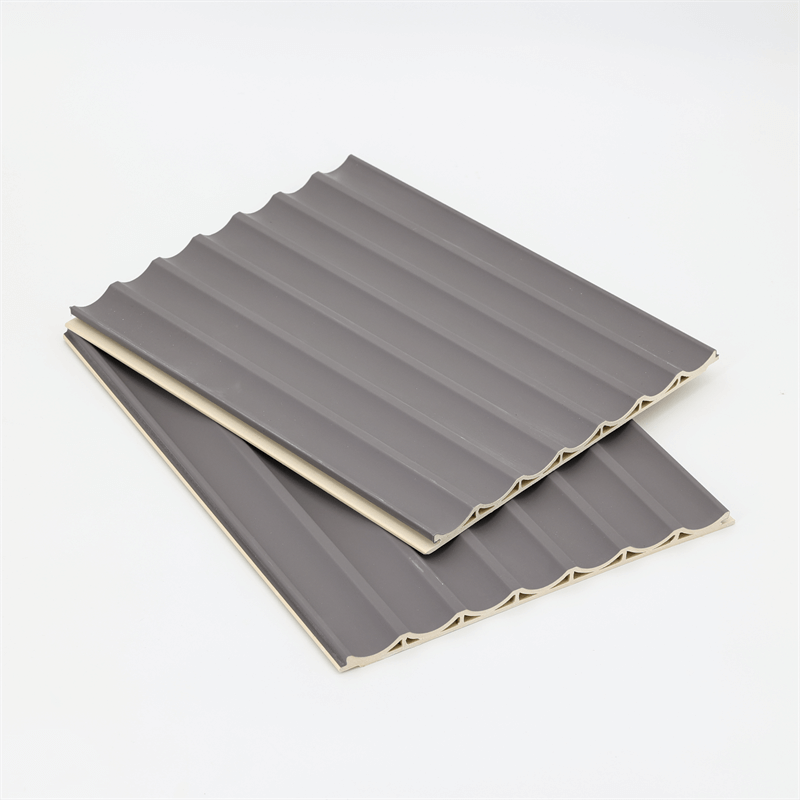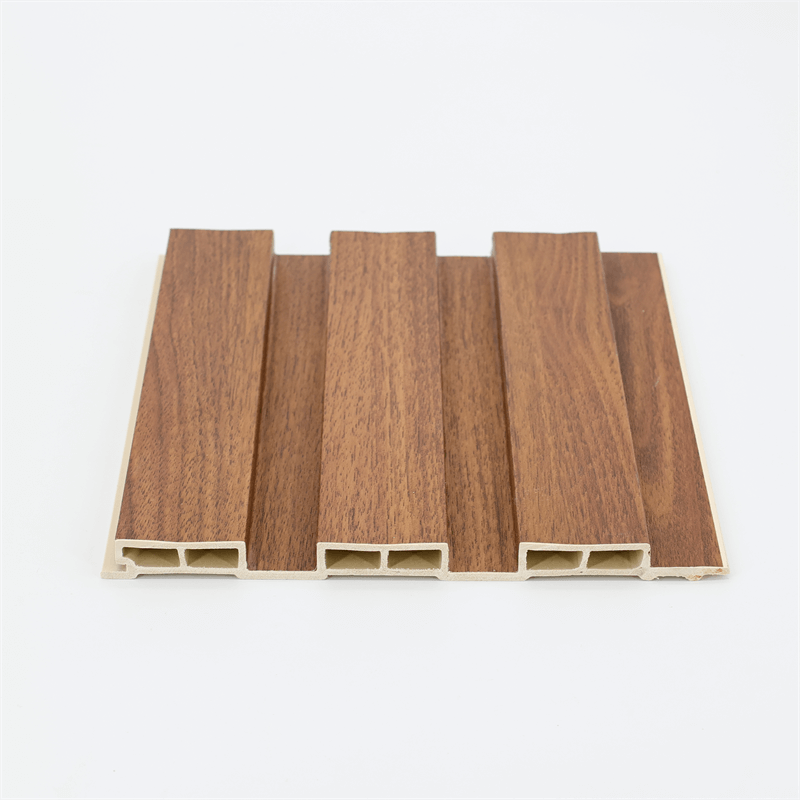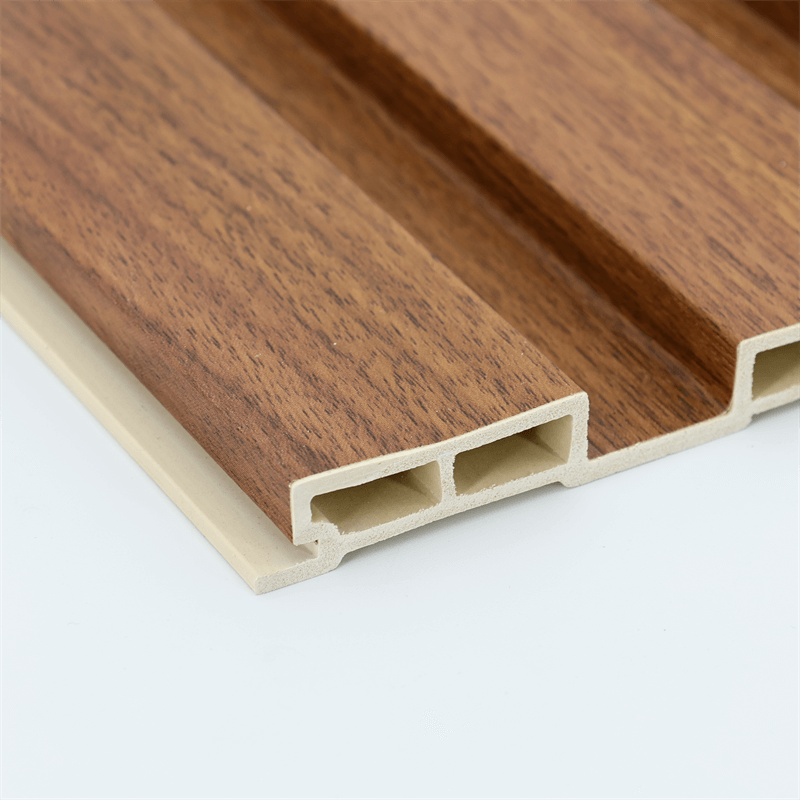Wood has been a traditional building material for centuries, but its widespread use raises concerns about deforestation and environmental impact.
As the need for sustainable construction practices grows, alternatives to wood are gaining prominence.
Wood-Plastic Composite (WPC) wall panels have emerged as a viable and eco-friendly substitute for wood in various applications.
This essay explores the benefits and advantages of using WPC wall panels as a sustainable alternative to wood, focusing on four key aspects:
material composition, reduced environmental impact, durability, and design versatility.
I. Material Composition: A Responsible Combination
WPC wall panels are composed of a blend of wood fibers and plastic polymers. This unique combination offers a responsible and sustainable use of resources.
The wood fibers used in WPC panels are often sourced from recycled materials, such as post-consumer wood waste or agricultural by-products.
By utilizing these materials, WPC panels help reduce the demand for virgin wood, which in turn minimizes deforestation and promotes sustainable forestry practices.
The plastic polymers in WPC panels are typically derived from recycled materials, such as high-density polyethylene (HDPE) from plastic bottles or polypropylene (PP) from packaging materials.
Incorporating recycled plastics into WPC panels not only reduces the reliance on fossil fuels but also diverts plastic waste from landfills, contributing to a circular economy.
The combination of recycled wood fibers and plastic polymers in WPC panels provides a responsible and sustainable alternative to wood, utilizing resources that would otherwise go to waste.
II. Reduced Environmental Impact: A Greener Choice
Compared to wood, WPC wall panels offer a reduced environmental impact throughout their lifecycle. Several factors contribute to their eco-friendliness.
Firstly, WPC panels require fewer resources to manufacture compared to solid wood products.
By utilizing recycled materials and reducing the demand for virgin resources, WPC panels help conserve natural resources and minimize the environmental footprint associated with wood production.
Additionally, WPC panels require less energy to produce. Traditional wood processing involves energy-intensive procedures such as logging, milling, and transportation.
In contrast, the manufacturing process of WPC panels involves blending the wood fibers and plastic polymers, which consumes less energy and emits fewer greenhouse gases.
Furthermore, WPC panels are designed to have a longer lifespan than natural wood. They resist decay, rot, and insect damage, reducing the need for frequent replacements.
The durability and longevity of WPC panels contribute to waste reduction and promote sustainable construction practices.
III. Durability: Long-lasting Performance
One of the key advantages of WPC wall panels is their exceptional durability. They offer a longer lifespan compared to natural wood, resulting in reduced maintenance, replacement, and waste generation.
WPC panels are highly resistant to environmental factors such as moisture, UV radiation, and temperature fluctuations.
Unlike wood, which can warp, rot, or fade under these conditions, WPC panels maintain their structural integrity and aesthetic appeal over time.
Their moisture resistance makes WPC panels suitable for areas prone to high humidity or moisture, such as bathrooms and kitchens.
They do not absorb water, preventing issues such as swelling, warping, or mold growth.
The durability of WPC panels also translates into reduced maintenance requirements. Unlike wood, they do not require regular staining, sealing, or painting to maintain their appearance and performance.
Cleaning WPC panels is a simple task that typically involves mild detergent and water, further reducing the time, effort, and resources associated with maintenance.
IV. Design Versatility: Aesthetic Appeal and Customization
WPC wall panels offer a wide range of design options, making them a versatile choice for various applications.
Their aesthetic appeal and customization possibilities allow designers and homeowners to achieve desired visual outcomes.
WPC panels often mimic the natural look and texture of wood, providing warmth and character to interior and exterior spaces.
They come in various finishes, colors, and patterns, allowing for customization to suit different design styles and preferences.
Moreover, WPC panels can be easily shaped, cut, and molded, offering flexibility in design and installation.
They can be used to create unique patterns, accent walls, or focal points, adding creativity and visual interest to the space.
WPC panels also offer the possibility of combining different materials, such as incorporating glass or metal elements, to achieve striking visual effects.
This design versatility enables designers to create aesthetically pleasing and innovative spaces that meet the requirements of contemporary design.

WPC wall panels present a sustainable alternative to wood, offering numerous benefits for environmentally conscious construction and design practices.
The material composition of WPC panels, utilizing recycled wood fibers and plastic polymers, promotes responsible resource usage and reduces waste.
Their reduced environmental impact throughout their lifecycle, including manufacturing, use, and disposal, contributes to a greener choice for construction materials.
The durability of WPC panels ensures a long-lasting performance, reducing the need for frequent replacements and associated waste generation.
Their resistance to moisture, rot, and UV radiation makes them suitable for various applications, including moisture-prone areas.
Additionally, their low maintenance requirements save time, effort, and resources.
The design versatility of WPC panels allows for creative expression and customization, enabling designers to achieve desired aesthetics and visual effects.
The availability of different finishes, colors, and patterns ensures compatibility with various design styles and preferences.
By opting for WPC wall panels as a sustainable alternative to wood, individuals, architects, and builders can contribute to a more environmentally friendly construction industry while enjoying the benefits of durability, design versatility, and reduced maintenance.


